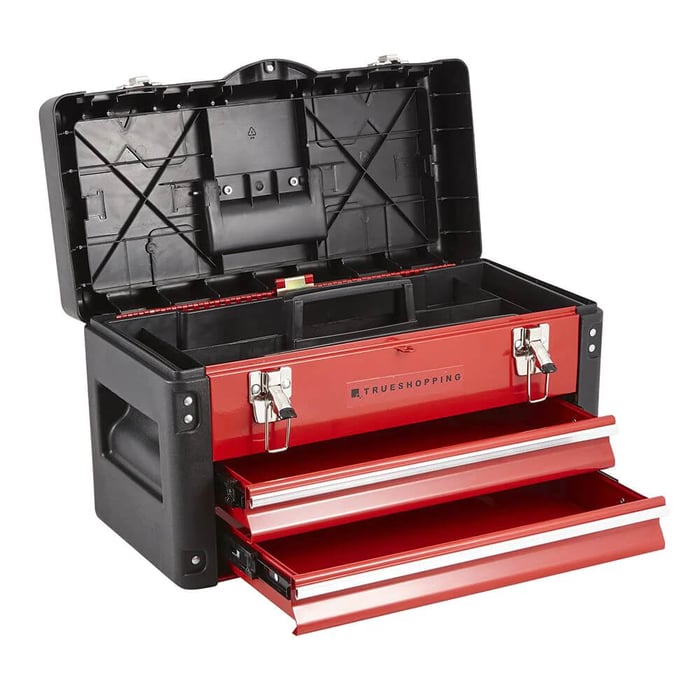Power tools are a valuable investment and need to be properly taken care of. To do that, you must rely on efficient storage solutions and thoughtful organisation. We’re here to help!
Why Store Your Garden Tools?
For DIY enthusiasts, there’s a wide range of tools to get excited about and play around with. Mainly power tools, which are power-driven from an external source, e.g. electricity or gas.
Electric tools are popular among professionals and hobbyists alike. Stationary power tools come next, then garden tools, and so on. They make many jobs easier, faster and safer than doing them by hand. This gives the hand-powered tools versatility — suitable for different applications.
The more you have, the better. But the downside is that you accumulate greater, and the toolbox becomes jammed over time. And the reality is that workers often end up having at least one tool going missing.
When misplaced or improperly handled, the tools can pose safety risks. Eventually, equipment failure. Thus, it’s essential to store and organise your range of tools with care.
Organising Your Power Tools
To avoid losses or disorder dilemmas, here’s how you can organise your electric tools. The following storing tips also apply to any sort of power-driven hand equipment. These include gardening tools, stationary, cordless tools, and more.
Pre-storage maintenance
Power tools are made up of complex mechanical and electrical parts. Proper maintenance is key before placing them in storage, workbench, or toolbox. Doing so ensures your equipment is stored in top condition and remains for a long time.
Here are the best practices for pre-storage power tool maintenance:
- Cleaning after every job. Dust, debris, and moisture buildup manifest corrosion and electrical failure. Before storing your power tools, make sure to clean them with a clean cloth and take off all the grime after use. For signs of rust, remove them right away to prevent abrasion damage.
- Inspect for damage. Electrical devices should be checked for any damage before storage. This is especially important if you won’t be using them for a while. Take electrical cords, for instance. It must be inspected thoroughly for signs of wear and tear. If any of your equipment isn’t working, have them fixed or dispose of them - if repair is unlikely. Don’t let defective items accumulate on your workbench or toolbox; discard to save more space.
- Check the batteries (for cordless power tools). Cordless tools rely on their batteries to work. Make sure they’re in working order and replace them if necessary. For long-term storage, some battery types may require periodic discharge. Check the user’s manual for the correct charge and discharge procedures.
- Tighten all hardware and connections. Check all screws, nuts, bolts, and connections - make sure all are secured. Even loose connections on small parts can cause big problems. Tighten up any loose hardware for reliable and accurate performance over time.
- Lubricate. Not only will this help prevent rust, but also ensures that moving parts don’t get stuck. Check the manual, and identify the areas that need to be lubricated, as well as the type of lubricant to be used.
1. Setup a dedicated storage space
Choose a spot somewhere in your workshop that has no adverse environmental effects. This is crucial as it reduces any potential hazard not only to the tools but also to the user and the workspace.
You’ll want your storage area with less exposure to direct sunlight and high humidity. A climate-controlled room is also ideal. A shed works well if you want to separate these items from the main house. If you have extra space in the basement, make use of it; use the garage for automotive repairs.
Locking mechanisms are essential, too. This ensures everything is stored away from unauthorised individuals. Alarms or lockable casters are also worth considering if you’re storing them in the shed.
2. Create a docking area
A docking area is an effective way to keep your tools organised, reduce clutter, and allow for easy access. Your chargers and cords will have a home rather than be scattered throughout your crib.
What’s more, it eliminates trips across the garage or workshop to find the right equipment. It might serve you best to build your own so that you can customise it to your liking and assets. Add storage containers and include wall hooks for added flexibility.
Come up with a station design that’ll give you peace of mind every time a job gets done with minimal mess afterwards.
3. Make use of the cabinets
Having trouble finding storage for your power tools? Well, then, a tool cabinet is the answer. Cabinets offer extra protection from dust, dirt and moisture. They make the perfect and low-cost alternative for storing the tools safely away when not in use. You can purchase built-in units, repurpose the existing ones, or take the DIY route.
4. Hang them on the racks
A storage rack is a great way to keep track of your power tools and ensure they’re always within reach. This storage idea works best if you don’t have much space and only have a small collection of power tools.
Before installing or building, understand what type of tool you need to store. Long-handled garden tools, such as a cordless grass cutter, suit upright vertical racks. And to save floor space, mount the racks on the wall. To accommodate charging outlets for batteries, customise them.
Alternatively, hang them on walls or shelves using pegboards. Position the pegs to put up with and provide added support to larger tools.
Cordless 20V Power Tool
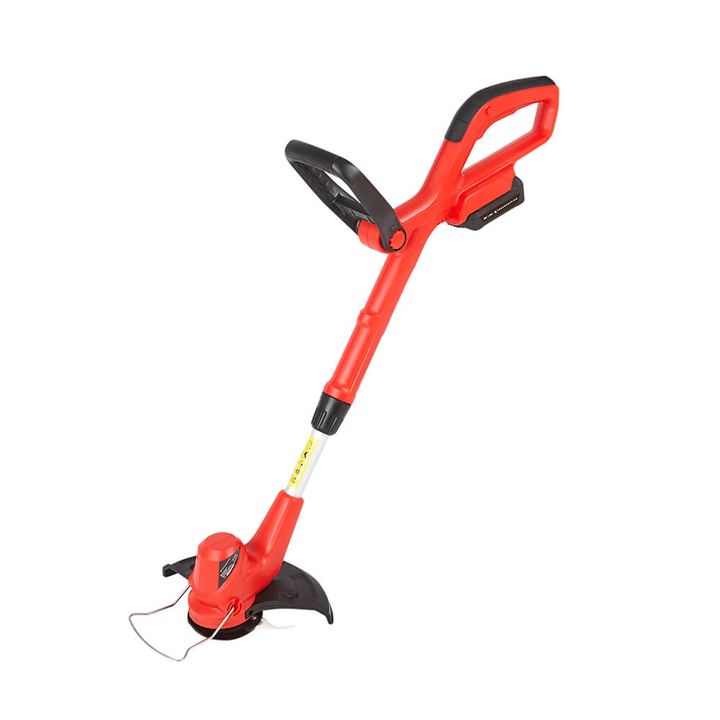
£54.00
More about the Cordless 20V Power Tool... The Cordless Grass Trimmer with 20V Lithium-Ion Battery and Fast Charger is a rechargeable and powerful grass trimmer that will revolutionise how you cut the grass in your garden. With no petrol, pollution or… read more
5. Go for clear containers
Plastic containers make versatile storage solutions. They offer more durability than standard cardboard boxes but aren’t as robust as wood or metal. Most clear plastic boxes also come with lids, keeping dust and debris at bay.
Their transparency makes it easier to find the power tool you need for the job. But labelling each container can add to the convenience. Also, consider making a list of the tools and their specific uses for quick reference if needed. Do this in your notebook or Google Docs/Sheets.
Durable plastic bins also provide a substantial amount of protection for your tools. They’re stackable and available in transparent form.
Plastic Roller Tool Box
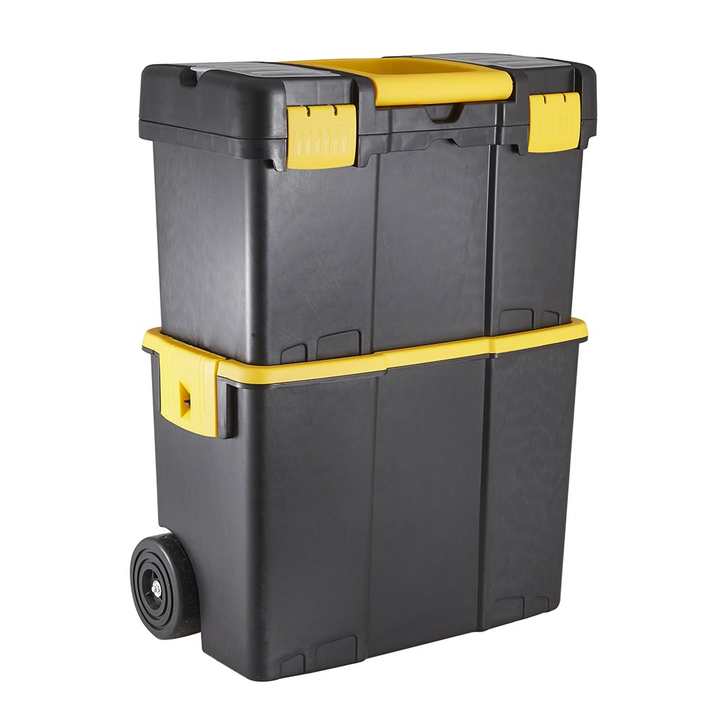
£17.00
More about the Plastic Roller Tool Box... When you’re moving around from location to location, and from site to site on a daily basis, you need accessories that will make your life easier along the way. This Plastic Roller Tool Box… read more
6. Maximise the original packaging
Don’t throw away the original packing of your power tool right away. It may be tempting enough to save more space, but it can be, in fact, the perfect protective storage you’re looking for.
One, most have in-built internal supports to protect the item from impact damage. Two, it’d only make sense to put it back in the box it came in if you’re planning for long-term storage.
Steel Toolbox
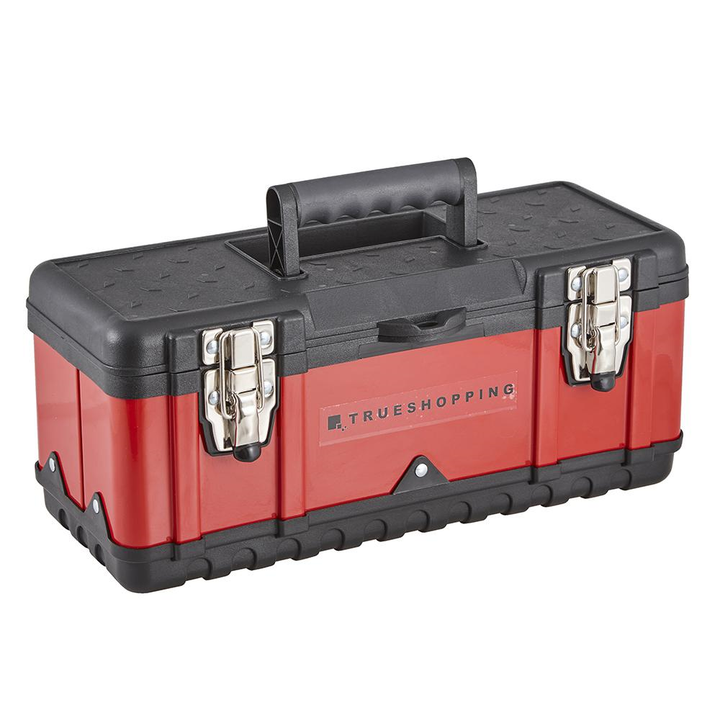
£15.38
More about the Steel Toolbox... If you work with tools every day you need a reliable way to keep them safe and accessible whenever you need them. This compact steel toolbox is designed to stand up to the most testing of… read more
7. Invest in a professional tool chest
Professional tool chests may be costly, but they sure are worthy of investment. Besides the robustness and lockable features, they are also mobile. Some are even outdoor-friendly.
If your project involves a lot of moving, consider getting those units with wheels on. Or, you may stick to a small chest with drawers that you can easily carry around anywhere.
Steel Toolbox Chest with Drawers
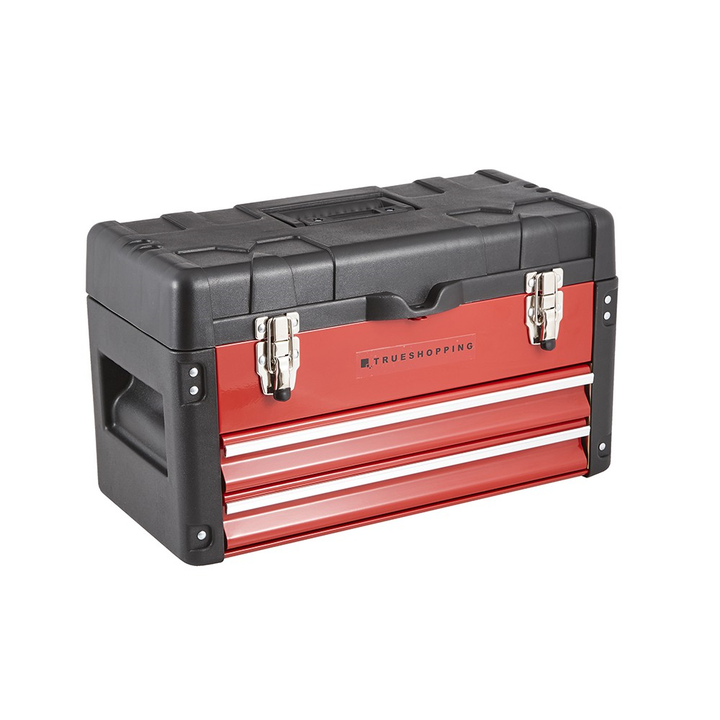
£30.47
£49.00
More about the Steel Toolbox Chest with Drawers... When it comes to storing tools and keeping them organised, you need a toolbox that makes life as straightforward as possible. This stainless steel tool chest is designed to make life easy, giving… read more
8. Get your tool bag
If you need to stay mobile to do your work, a tool bag is your best friend. If you need to stay mobile to do your work, a tool bag is your best friend. You’re free to hop from location to location with ease.
Tool bags are available in many designs, including those with padded handles. Shoulder straps also come in handy, or a backpack design if you’re a contractor.
You may look for one with zipper closures and stiff padded dividers for added protection. But if you wish not to fiddle around with zips and straps every time, go for an open tote tool bag. It can provide you with quick and easy access to your tools.
Open Tote Tool Bag
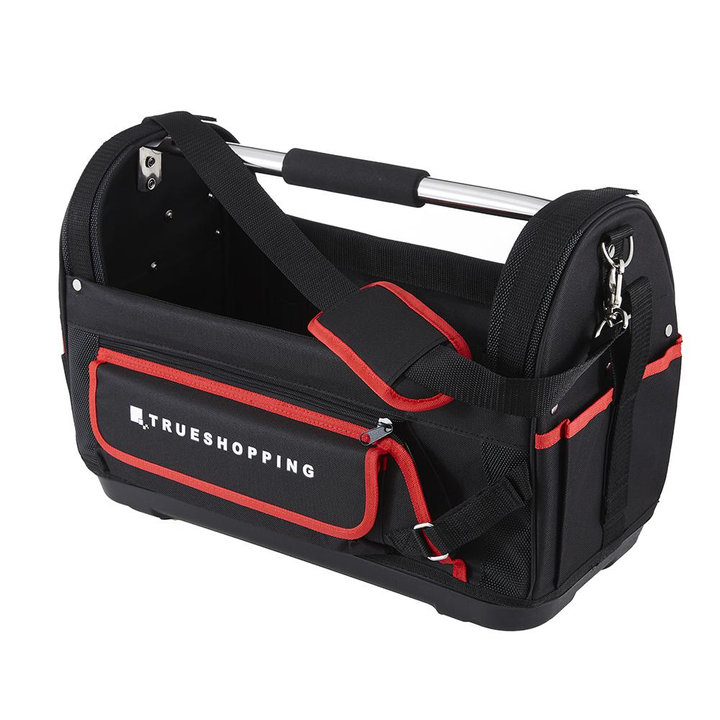
£20.00
More about the Open Tote Tool Bag... No matter where workpeople are plying their trade, they need quick and easy access to their tools without having to fiddle around with straps and zips each and every time. Our open tote tool… read more
Round-up
Careful planning and constant upkeep result in effective power tool storage ideas. Invest in the right organisers and pay attention to security. Do all that, including the solutions above, and ensure your power tools will serve you for years.













